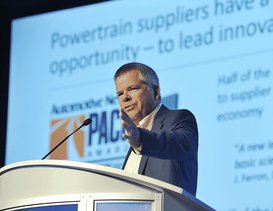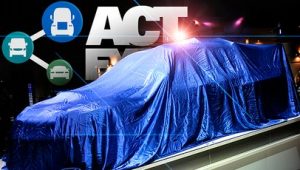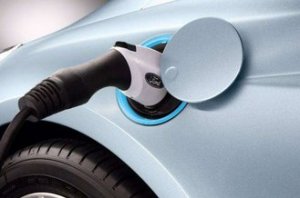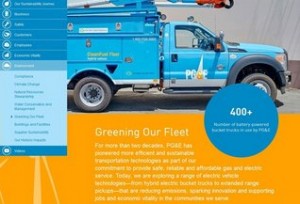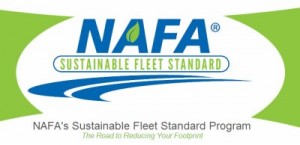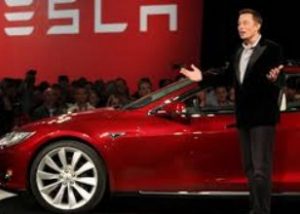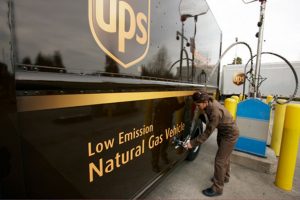 Last week’s proposed standards by the U.S. Environmental Protection Agency on cutting methane emissions from oil and gas by 40% to 45% from 2012 levels by 2025 will eventually have an impact on natural gas vehicles and fueling infrastructure. For those tracking the impact of natural gas in the US economy, transportation fuel, and electricity generation, legal and legislative battles have become pervasive in the U.S. at the state level; there’s been a lot of pressure on the Obama administration to issue clear national standards on hydraulic fracturing (fracking) and methane emissions governing the oil and gas industry.
Last week’s proposed standards by the U.S. Environmental Protection Agency on cutting methane emissions from oil and gas by 40% to 45% from 2012 levels by 2025 will eventually have an impact on natural gas vehicles and fueling infrastructure. For those tracking the impact of natural gas in the US economy, transportation fuel, and electricity generation, legal and legislative battles have become pervasive in the U.S. at the state level; there’s been a lot of pressure on the Obama administration to issue clear national standards on hydraulic fracturing (fracking) and methane emissions governing the oil and gas industry.
The Obama administration is remaining committed to natural gas as a clean, domestic energy source, but expects it to align with overarching plans on clean energy; which the electric power industry is going through right now with the Obama administration’s Clean Power Plan. How natural gas is extracted and delivered to end users has become a pressing issue for the federal government to face. “Cleaner-burning energy sources like natural gas are key compliance options for our Clean Power Plan and we are committed to ensuring safe and responsible production that supports a robust clean energy economy,” said Gina McCarthy, EPA administrator, about the proposed oil and gas rules.
Here’s an overview of the proposed rules and how they may affect the natural gas industry:
- The proposed EPA standards would deal with finding and repairing leaks; capturing natural gas from the completion of fracked oil wells; limiting emissions from new and modified pneumatic pumps; and limiting emissions from several types of equipment used at natural gas transmission compressor stations, including compressors and pneumatic controllers.
- The EPA says the proposed standards will complement voluntary efforts, including the Methane Challenge Program, and are based on practices and technology currently used by industry. It would complement programs made during the last 20 years through the successful Natural Gas STAR Program, while significant opportunities remain to reduce methane emissions, improve air quality, and capture and monetize this valuable energy resource.
- In related news, seven oil and gas businesses have committed to reduce their methane emissions and back the United Nation’s campaign for a global standard for controlling emissions from oil and gas infrastructure. BG Group, ENI, PEMEX, PTT, Southwestern Energy, Statoil, and Total submitted pledges for reducing methane output through the United Nations Framework Convention on Climate Change’s (UNFCCC) Non-State Actor Zone for Climate Action (NAZCA) portal.
- The EPA’s proposed rules for the oil and gas industry could address concerns over methane leaks producing a lot more greenhouse gas emissions. A study last year by scientists at Stanford University, the Massachusetts Institute of Technology and the U.S. Department of Energy’s National Renewable Energy Laboratory raised concerns over benefits gained by the transportation fuel. The study found that methane leaks negate the climate change benefits of using natural gas as a transportation fuel.
- The “Rethink Methane” conference held in Sacramento, Calif., on June 9-10, explored the potential of renewable natural gas (RNG) and power-to-gas in transportation and energy. Speakers looked at the challenges and opportunities of how biogas can help California meetings climate protection and air quality improvement goals and strengthen the state’s economic future. Energy Vision, a nonprofit advocacy group, has been following how states like New York are adopting similar policies on RNG as a transportation fuel and on the potential benefits of organic waste.
- Next month’s NGVAmerica annual conference will host workshops on how natural gas is being addressed in environmental regulations and in government funding programs. The federal Advanced Research Projects Agency for Energy (ARPA-E) is holding its MOVE Program Review, an invitation-only conference, Sept. 14-15 in Denver. MOVE is the Methane Opportunities for Vehicular Energy initiative overseen by ARPA-E; it will be followed immediately by the 2015 North American Natural Gas Vehicle Conference & Expo hosted by NGVAmerica in Denver, which is taking place Sept. 15-17. ARPA-E awarded $30 million to 13 organizations under the MOVE initiative in mid-2012. Nine of the projects addressed the challenge of storing natural gas onboard a vehicle, and four of the projects were for development of home fueling equipment.
- “GHGs and Climate Change: NGVs and the Road Toward a Sustainable Future” will take place during the NGVAmerica conference and will feature Todd Campbell, VP, Public Policy & Regulatory Affairs, Clean Energy Fuels Corp., and Kathryn Clay, Vice President, American Gas Association. They’ll be discussing how the growing focus on climate change and greenhouse gas emissions could affect policies and regulations for natural gas vehicles. The discussion also will address the potential of RNG and its role in the future growth of the natural gas vehicle market.

